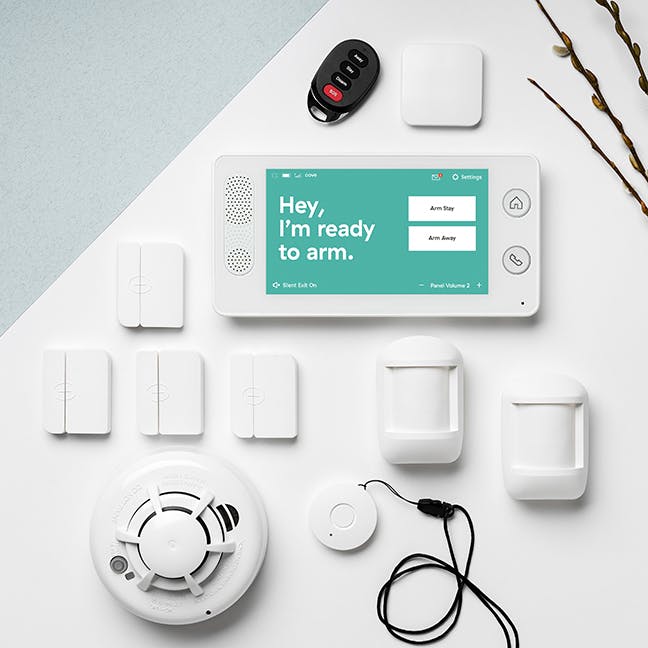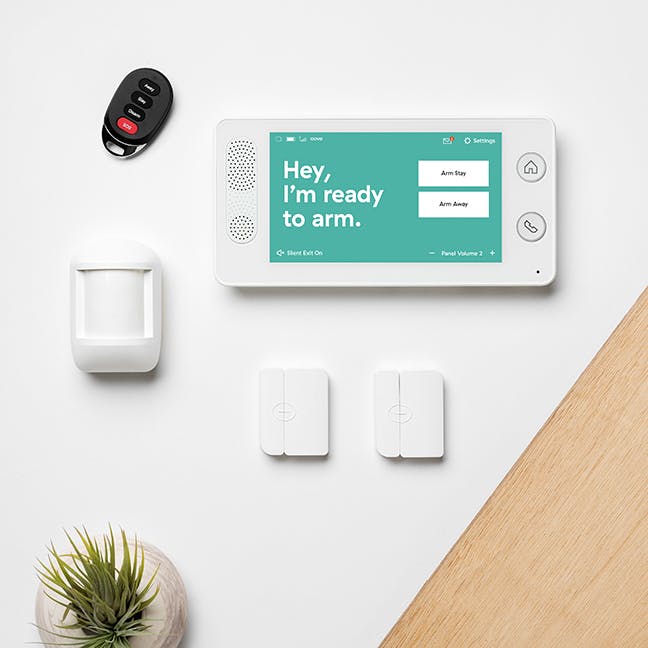
El Paso has a population of 682,000 people and is one of the largest cities in Texas. However, is the area safe? This article will answer every question an El Paso resident might have about the best ways to protect their homes and families while living in El Paso.

Are Residents of El Paso Safe?
Answer: El Paso is safer than 30 percent of cities in the US.
Residents of El Paso report feeling both safe and unsafe while in the city. A poll from AreaVibes asks, “How would you rate the amount of crime in El Paso?” Of those who responded, 28 percent said, “Excellent. There is virtually no crime in this area.” Another 23 percent said, “Good. There is only a little crime in this area.” Although half of the responders felt comfortable with the crime in their areas, the other half report high numbers of crime and report feeling unsafe. Twenty-five percent responded, “Poor. There is more crime than I’d like in this area,” and 23 percent said, “Awful. Crime is rampant in this area.”
Crime rates in El Paso are averagely low, compared to the national average. However, half of the residents still feel unsafe. So, how safe is El Paso?
To determine whether El Paso is safe or unsafe, we need to compare the city’s crime rates to the national average crime rates. The national crime rate stands as an average, meaning that cities and states can compare their crime rates to the national average to determine whether they have high or low crime rates. If a city has a higher crime rate than the national average, the area is considered more dangerous. If the area’s crime rate is lower, it’s safer. Keeping this in mind, it’s important to know that crime rates don’t reflect the safety of an entire area. Within a city ranked as dangerous, there will still be neighborhoods that are safer than average. The same is true of a “safe” city—there will still be areas with high crime.

According to the national crime rates, residents in the United States have a one in 261 chance of experiencing violent crime. This suggests that violent crime is fairly common. The national violent crime rate in the nation is 382 violent crimes per 100,000 people. The crime rates for murder, rape, robbery, and assault are:
- National Murder Rate: 5 murders per 100,000
- National Rape Rate: 43 rapes per 100,000
- National Robbery Rate: 86 robberies per 100,000
- National Assault Rate: 247 assaults per 100,000
Property crimes are the most common crime committed in the United States, and a United States resident has a one in 42 chance of experiencing property crime. Residents will likely experience multiple property crimes in their lifetime. The national average property crime rate is 2,362 property crimes per 100,000 people. The property crime rates for burglary, theft, and car theft are:
- National Burglary Rate: 376 burglaries per 100,000
- National Theft Rate: 1,595 thefts per 100,000
- National Car Theft Rate: 229 car thefts per 100,000
Now, let’s compare the El Paso crime rate to the national average. The overall crime rate in El Paso is 27 percent lower than the national average, meaning that a majority of El Paso is fairly safe. The violent crime rate is 371 violent crimes per 100,000 people, with 2,554 violent crimes. The violent crime rate is three percent lower than the national average. The crime rates for murder, rape, robbery, and assault are:
- El Paso Murder Rate: 3 murders per 100,000
- El Paso Rape Rate: 58 rapes per 100,000
- El Paso Robbery Rate: 54 robberies per 100,000
- El Paso Assault Rate: 254 assaults per 100,000

Although some of El Paso’s violent crime rates are below average, rape is above average, meaning that those walking alone at night should take necessary precautions to protect themselves and their loved ones. Security professionals recommend that those walking alone should carry pepper spray and a personal safety app open on their mobile phone.
The property crime rate in El Paso is 32 percent lower than the national average, with 1,206 property crimes per 100,000 people. The total number of property crimes is 10,365 property crimes. The odds of experiencing property crime in El Paso are one in 64. The property crime rates for burglary, theft, and car theft are:
- El Paso Burglary Rate: 160 burglaries per 100,000
- El Paso Theft Rate: 1,226 thefts per 100,000
- El Paso Car Theft Rate: 118 car thefts per 100,000
Property crime rates are lower in El Paso, with certain areas with high crime rates. However, it’s important to remember that it’s still possible to become a property crime victim, even if the average rates are lower than the national average. There are 1,147 burglaries, 8,441 thefts, and 817 car thefts reported each year.
If property crime rates are low, should residents be worried about burglaries? Residents shouldn’t actively fear for the safety of their homes and families. However, just because they shouldn’t be actively scared doesn’t mean that they shouldn’t take the right precautions. Property crime is low, but not nonexistent. Each year, over 1,147 people have their homes broken into and their personal property stolen. Burglaries put the lives of the family members at risk and shatter their sense of personal security. No matter where you live, homeowners should take the appropriate steps to protect themselves. Home security, no matter what form your home security comes in, is important.

What Is the Best Protection Against Property Crime?
Answer: The best protection is a home alarm system.
On average, a burglar will steal over $2,000 in ten minutes. The burglar also fractures the sense of the security that the homeowner may have, making the family feel unsafe and unprotected in their home. Providing simple protection that deters burglars can help families in El Paso take control of their home protection. What will give El Paso residents the best protection against an intruder?
In 2012, the University of North Carolina at Charlotte published a study titled “Understanding Decisions to Burglarize from the Offenders Perspective.” The study focused on convicted burglars in order to determine what made burglars target specific homes and what deterred them. The study found, “Close proximity of other people (including traffic, those walking nearby, neighbors, people inside the establishment, and police officers), lack of escape routes, and indicators of increased security (alarm signs, alarms, dogs inside, and outdoor cameras or other surveillance equipment) was considered by most burglars when selecting a target.” This shows that burglars are deterred by things that might make burglary more difficult. Burglars target homes that are easy to get inside. They look for empty homes with unlocked doors and no alarm system.
The study found that one of the largest deterrents for a majority of burglars was a security alarm system. The study discovered four main ways that a home security system affects burglars:
- Within a broad set of potential target hardening deterrents, alarms and outdoor cameras and other surveillance equipment were considered by a majority of burglars.
- About 60% of the burglars indicated that the presence of an alarm would cause them to seek an alternative target altogether.
- Most burglars would try to determine if an alarm was present before attempting a burglary.
- Among those that determined that an alarm was present after initiating a burglary, about half would discontinue the attempt.

Essentially, the presence of a home security system can deter up to 80 percent of burglars. No other type of security solution can provide the same protection to homeowners and renters as a home security system. Burglars don’t want to be caught, and most will do almost anything to prevent themselves from being caught. Targeting a home that has a security camera with video surveillance nearly guarantees that they will be caught in the act. Because of that, most burglars avoid homes that have an obvious security system.
Not all home security systems are obvious, meaning that some burglars will still attempt to break into a home that is protected by a security system. When this happens, the alarms placed around the home and the alarms’ reliability are vital. A majority of burglars who trigger a home security system alarm will turn and run the other direction rather than learn the consequences of the alarm.
Security and safety experts highly recommend that El Paso residents install a camera system or alarm system in their home to prevent burglaries, especially if the resident feels anxious or worried about crime in their area. A home security system with remote monitoring and professional monitoring can also help a family feel safer and more secure. For example, many alarm systems come equipped and fire and carbon monoxide sensors, which help protect the family in case of air quality poisoning or smoke.
Which Security Devices Offer the Best Protection?
Answer: Residents should have door and window sensors, video surveillance, and motion sensors.
Not all security devices will offer the same level of protection for the El Paso resident. Security home automation aims to prevent an intruder or thief from getting inside without triggering an alarm. Here are four essential security tools that every El Paso resident needs in order to protect their home.

1. Door Sensor The first device that is absolutely necessary is the door sensor. A door sensor is a small, inconspicuous device that is installed on the inside of your home. Door sensors can be wired or wireless, though wireless sensors are often preferred. Wireless door sensors are often included as part of a wireless system. When the door sensor is installed, the sensor protects the door from opening. If the door opens while the system is armed, the device triggers an alarm.
2. Window Sensor
Many homeowners underestimate the importance of protecting their windows. According to polls, 34 percent of burglars enter the home through the front door, 23 percent use a first-floor window, 22 percent enter through the back door, nine percent use the garage door, four percent try a basement door, and two percent use a second-story window. Windows are often used by burglars to gain access to the house. Luckily, homeowners can use a window sensor to protect the window. A window sensor is similar to a door sensor—if the window opens while the alarm system is armed, it will trigger an alarm. Homeowners can also install a glass break sensor, which listens for the frequency of breaking glass. With both types of window sensors installed, burglars won’t be able to use the home’s windows to gain entrance.
3. Indoor Security Camera Some studies suggest that an outdoor camera can attract some burglars. Experienced burglars may see an outdoor camera and assume that the home has something important and valuable to protect. This is why an indoor wireless security camera can be more effective than an outdoor camera. Cameras are meant to collect evidence that can be used to convict the burglar. Indoor cameras are perfect because there is less room for the burglar to hide. If they enter the room, the camera will be ready to film every move they make. If the home security customer is using remote monitoring, they can also watch the burglar on the live camera feed on their phone. With professional monitoring, the home security company can use the information from the video surveillance to give detailed information to police.
4. Motion Sensor The fourth device that is essential to a protected home is a home sensor. A motion detector is an important device that can sense movement in a room. It uses PIR motion detection, which is sensitive enough to tell the difference between a shadow and a person. PIR sensors are also pet friendly. Having a motion sensor is vital because it acts as a backup to your door and window sensors. If the burglar or thief is able to get past the door and window sensors protecting the home, the motion sensor will be the final warning alarm. By the time the burglar triggers the motion sensor, the police will already be on their way.
El Paso residents will find everything they need in Cove Security. Cove’s alarm systems are completely wireless and provide flawless protection for homeowners, renters, and business owners in El Paso.
